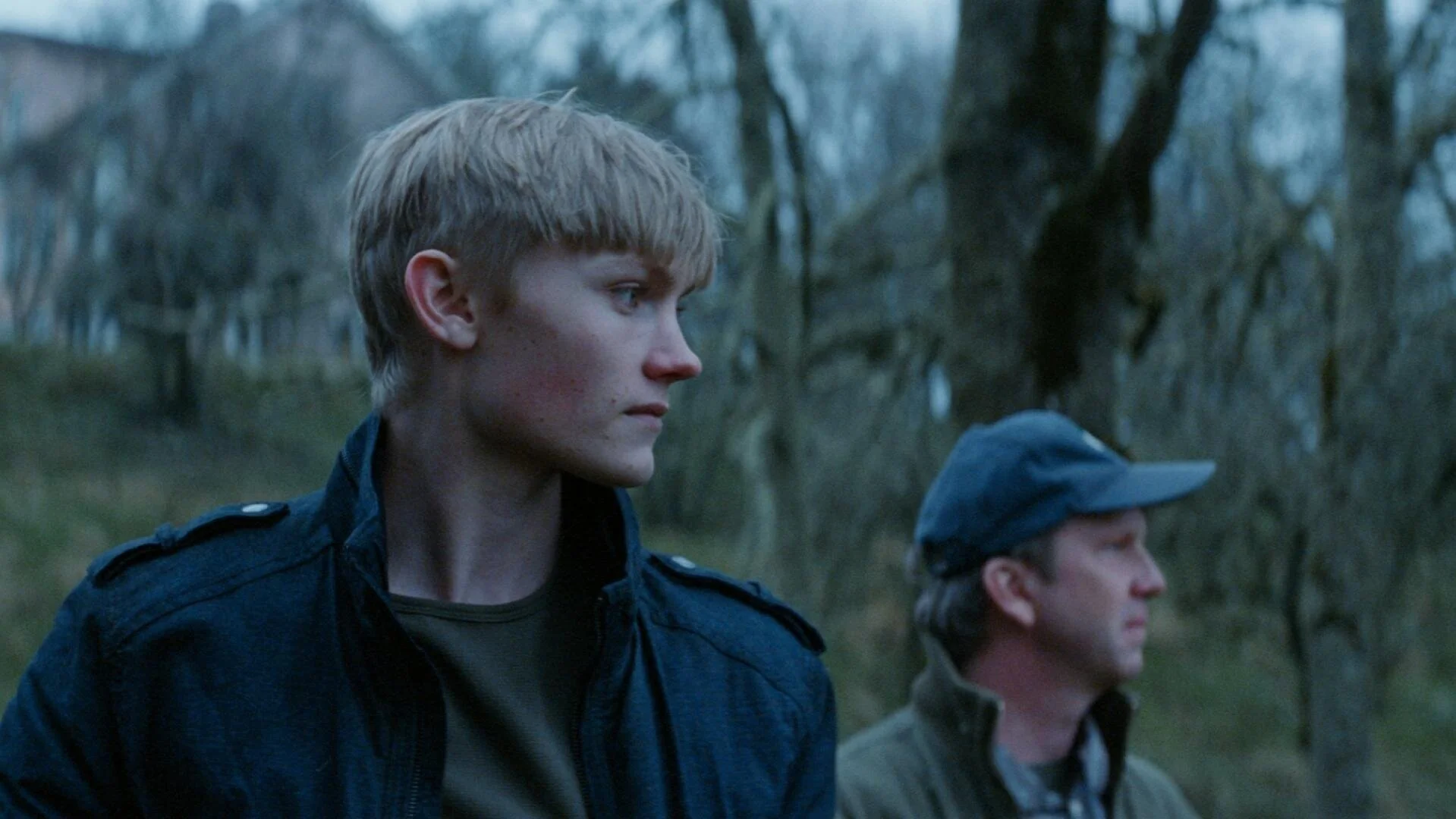The Here After
In Magnus von Horn’s minimalistic drama a teenager discovers how difficult it is to put his past behind him.
Ulrik Munther and Mats Blomgren
Set in Sweden, this is a thoughtful film by writer/director Marcus von Horn that eschews music on its soundtrack and seeks to capture the tone of everyday life as it portrays the crisis faced by its young central character, John (Ulrik Munther). The opening shot shows him packing clothing into a suitcase ready for departure. There’s a woman to hug him as he sets out and this could easily be a mother with a son leaving home. The impression is deceptive, however, for John is leaving a correctional facility and his is not a journey out but a journey back. We follow him and his father to the small town where father works the land and lives with his other son, John’s younger brother. This existence is the ‘here’ of the title, but for a long time we don’t know to what this is the ‘after’. Clearly John had committed some crime, an act of a kind that results in his fellow pupils at his old school giving him a very bad time. But he wants to move on if he can and the presence there of a newcomer, Malin (Loa Ek), may make that possible. As against that, the past remains formidably present.
Filmed in ’Scope as well as in colour, The Here After has a deliberately constricted feeling to it: there is limited camera movement and a frequent refusal to follow characters when they move out of the frame. We are given little background information (there is no mother in this family and we learn nothing of her) and the whole approach is serious and minimalistic. The film certainly feels sincere, but while it holds the interest throughout (an achievement in itself) it doesn’t rivet one.
It could be argued either that the film’s limitations are validly its own and should be accepted or alternatively that the work is simply unlucky to be overshadowed by earlier works. The last shot in the film, following a climax which rather pushes the drama externally but feels true inwardly, is reminiscent of the ending of The Goob (2015) but lacks that film’s impact. More significantly The Here After cannot match the depth and insight of 2011’s Breathingwhich covered somewhat similar ground. Furthermore Thomas Schubert in that film gave a central performance that the able Ulrik Munther cannot match. It’s also possible to feel that the film is playing us along by holding back for so long the information known to all the characters in this story, namely exactly what John had done two years earlier. Those without these comparisons to make may not share my reservations and it should in any case be said that The Here After is in many ways a work of merit.
MANSEL STIMPSON
Cast: Ulrik Munther, Mats Blomgren, Loa Ek, Alexander Nordgren, Wieslaw Komasa, Ellen Jelinek, Oliver Heilmann, Felix Göransson, Inger Nilsson, Sven Ahlström.
Dir Magnus von Horn, Pro Mariusz Wlodarski and Madeleine Ekman, Screenplay Magnus von Horn, Ph Lukaz Zal, Pro Des Jagna Dobesz and Henrik Ryhlander, Ed Agnieszka Glinska, Costumes Anna-Karin Cameron.
Lava Films/Zentropa International Sweden/Cinéma Defacto/Film i Väst/Opus Film etc.-Soda Pictures.
102 mins. Poland/Sweden/France. 2015. Rel: 11 March 2016. Cert. 15.


